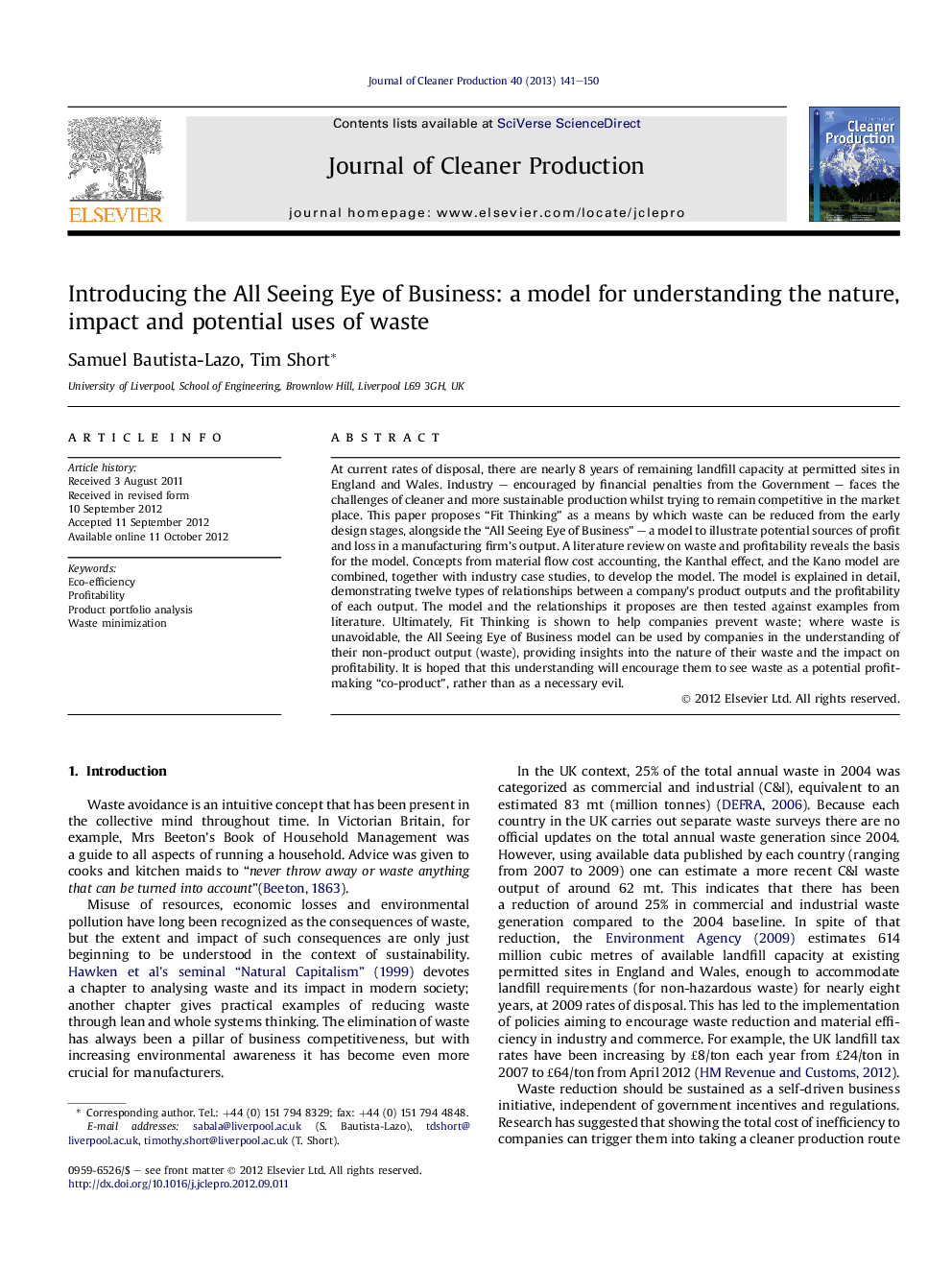| کد مقاله | کد نشریه | سال انتشار | مقاله انگلیسی | نسخه تمام متن |
|---|---|---|---|---|
| 1745596 | 1522206 | 2013 | 10 صفحه PDF | دانلود رایگان |

At current rates of disposal, there are nearly 8 years of remaining landfill capacity at permitted sites in England and Wales. Industry – encouraged by financial penalties from the Government – faces the challenges of cleaner and more sustainable production whilst trying to remain competitive in the market place. This paper proposes “Fit Thinking” as a means by which waste can be reduced from the early design stages, alongside the “All Seeing Eye of Business” – a model to illustrate potential sources of profit and loss in a manufacturing firm's output. A literature review on waste and profitability reveals the basis for the model. Concepts from material flow cost accounting, the Kanthal effect, and the Kano model are combined, together with industry case studies, to develop the model. The model is explained in detail, demonstrating twelve types of relationships between a company's product outputs and the profitability of each output. The model and the relationships it proposes are then tested against examples from literature. Ultimately, Fit Thinking is shown to help companies prevent waste; where waste is unavoidable, the All Seeing Eye of Business model can be used by companies in the understanding of their non-product output (waste), providing insights into the nature of their waste and the impact on profitability. It is hoped that this understanding will encourage them to see waste as a potential profit-making “co-product”, rather than as a necessary evil.
Journal: Journal of Cleaner Production - Volume 40, February 2013, Pages 141–150